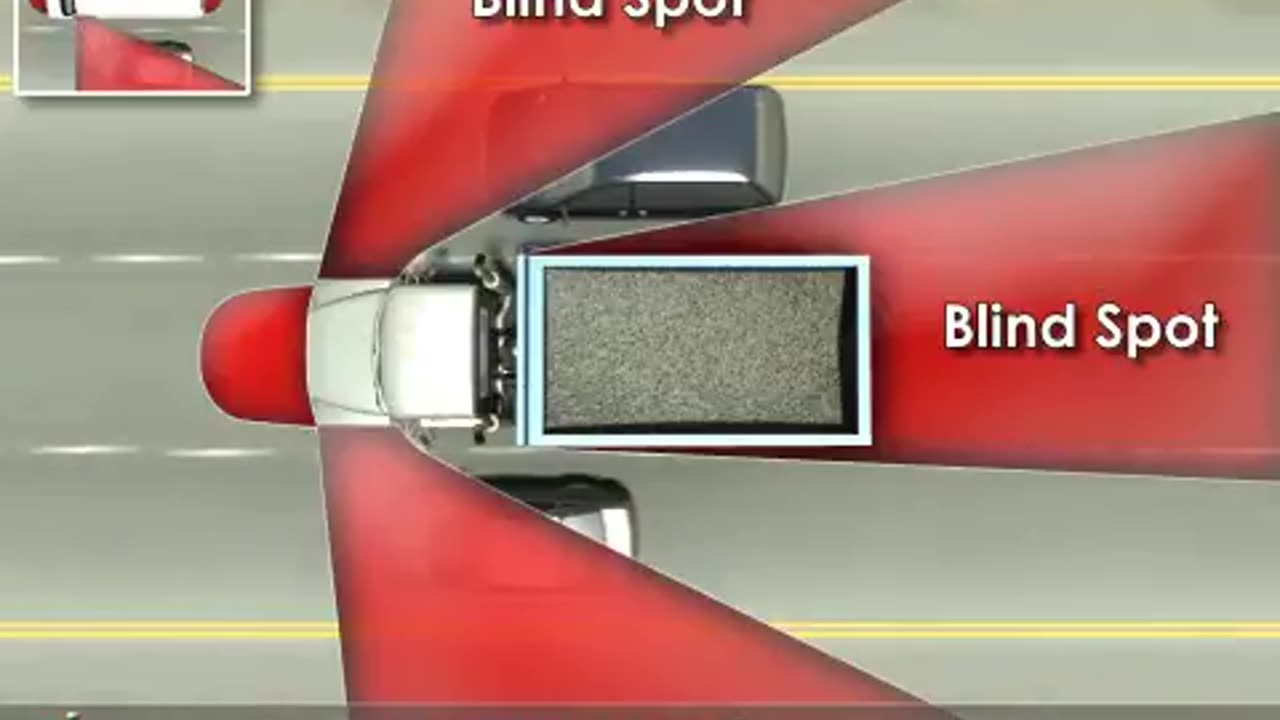Premium Only Content

Driving Hazard Recognition Training
**Driving Hazard Recognition Training** focuses on teaching drivers how to identify, assess, and mitigate risks on the road to ensure safer driving practices. Below is a detailed structure for such training:
---
## **1. Importance of Hazard Recognition**
- **Purpose**: Minimize accidents and ensure safety for the driver, passengers, and other road users.
- **Statistics**: Provide data on how hazard recognition reduces accidents.
- **Proactive Driving**: Stress the importance of anticipating hazards rather than reacting to them.
---
## **2. Types of Driving Hazards**
- **Environmental Hazards**:
- Weather: Rain, snow, fog, ice, and wind.
- Road conditions: Potholes, uneven surfaces, and debris.
- Low visibility: Nighttime, sun glare, and obscured signs.
- **Traffic Hazards**:
- Congestion: Sudden stops, merging traffic, and bottlenecks.
- Aggressive drivers: Speeding, tailgating, or road rage.
- Pedestrians, cyclists, and animals on the road.
- **Vehicle-Related Hazards**:
- Mechanical issues: Tire blowouts, brake failure, or engine problems.
- Blind spots: Understanding and mitigating visibility limitations.
- **Driver Hazards**:
- Fatigue, distraction (e.g., mobile phones), or impaired driving.
---
## **3. The Five-Step Hazard Recognition Process**
1. **Scan the Road**: Continuously observe the environment using mirrors and checking blind spots.
2. **Identify Potential Hazards**: Look for any unusual or risky behavior by other road users.
3. **Predict Outcomes**: Anticipate how a hazard might evolve (e.g., a car merging without signaling).
4. **Decide on Action**: Plan your response (e.g., slow down, change lanes).
5. **Execute the Action**: Take appropriate measures to avoid or mitigate the hazard.
---
## **4. Defensive Driving Techniques**
- Maintain a **safe following distance** (3-5 seconds rule).
- **Adjust speed** based on conditions (weather, traffic, road).
- Stay aware of **escape routes** for sudden maneuvers.
- Use **signal lights** and **communicate intentions** to others.
- Avoid blind spots of large vehicles (trucks and buses).
---
## **5. Hazard Recognition in Specific Scenarios**
- **Intersections**:
- Anticipate vehicles running red lights or stop signs.
- Watch for pedestrians or cyclists crossing.
- **Highway Driving**:
- Merge smoothly; anticipate lane changes by other vehicles.
- Be cautious of high-speed vehicles and sudden stops.
- **Urban Driving**:
- Watch for jaywalkers, cyclists, and cars pulling out from parking.
- **Rural Driving**:
- Be cautious of animals crossing and narrow roads.
---
## **6. Dealing with Common Hazards**
- **Distracted Drivers**: Maintain distance and stay vigilant.
- **Aggressive Drivers**: Avoid engaging; let them pass.
- **Bad Weather**:
- Slow down and use headlights appropriately.
- Increase following distance.
- **Mechanical Failures**:
- Pull over safely and activate hazard lights.
- **Emergency Situations**:
- Keep calm and follow emergency protocols (e.g., tire blowout).
---
## **7. Tools for Hazard Recognition**
- **Mirrors and Cameras**: Use rear-view and side mirrors; leverage backup cameras.
- **Vehicle Safety Features**:
- Adaptive cruise control, lane departure warning, blind-spot monitoring.
- **Apps and Navigation**:
- GPS systems with traffic updates to avoid risky routes.
---
## **8. Practical Exercises**
- **Simulated Driving Scenarios**:
- Use simulators to practice identifying and responding to hazards.
- **On-the-Road Training**:
- Conduct supervised drives focusing on hazard identification and mitigation.
- **Video Analysis**:
- Review real-life driving scenarios and discuss hazard responses.
---
## **9. Emergency Preparedness**
- Carry essential items: Emergency kits, reflective vests, and road flares.
- Understand how to respond to accidents or breakdowns safely.
---
## **10. Evaluating Learning**
- **Quizzes and Tests**:
- Assess understanding of hazard recognition principles.
- **Practical Assessment**:
- Evaluate performance in simulated or real driving situations.
- **Feedback**:
- Provide constructive advice to improve hazard recognition skills.
---
Would you like additional resources, such as training manuals, videos, or slides for specific scenarios?
-
 6:54
6:54
HSESafetyInformation
8 months ago6 Must Try Breakfast recipes By Food Fusion
371 -
 1:24:44
1:24:44
DeVory Darkins
2 hours agoTrump dominates 60 minutes interview as Democrats surrender to Mamdani
83.9K27 -
 LIVE
LIVE
Dr Disrespect
4 hours ago🔴LIVE - DR DISRESPECT - ARC RAIDERS - FULL SEND INTO THE RED
1,648 watching -
 1:50:43
1:50:43
Tucker Carlson
1 hour agoChris Williamson’s Advice to Men: How to Survive a World of OnlyFans and AI Girlfriends
32.3K24 -
 1:07:25
1:07:25
Timcast
2 hours agoBomb DETONATED At Harvard, Attacks On Ice Agents SKYROCKET
149K112 -
 1:55:31
1:55:31
Steven Crowder
5 hours agoTucker Carlson & MAGA: Everyone is Missing the Point
377K274 -
 1:11:22
1:11:22
The Rubin Report
3 hours agoWatch Joe Rogan’s Face as Elon Musk Exposes How Dems Are Cheating in Plain Sight
62.1K74 -
 1:01:07
1:01:07
VINCE
5 hours agoThe Walls Are Closing In On The Deep State | Episode 160 - 11/03/25
245K149 -
 LIVE
LIVE
LFA TV
20 hours agoLIVE & BREAKING NEWS! | MONDAY 11/3/25
2,135 watching -
 1:31:18
1:31:18
Graham Allen
6 hours agoErika Fights Back: Vows To EXPOSE TRUTH & DEMANDS Trial Goes Public!! Left Says Her Grief Is FAKE!
159K82